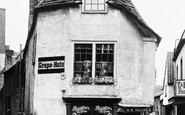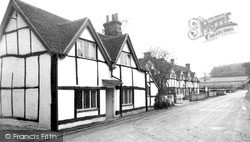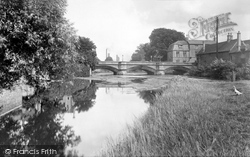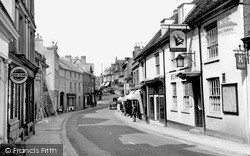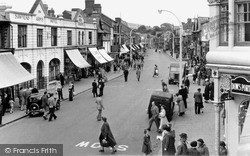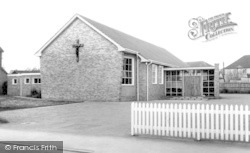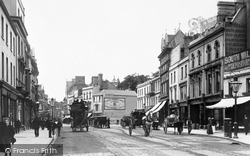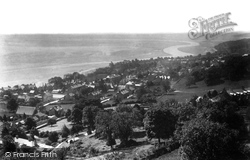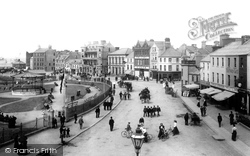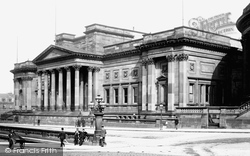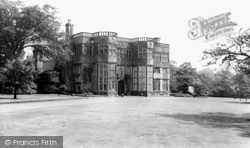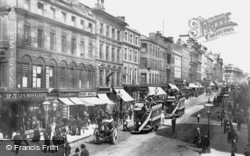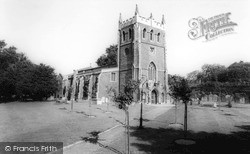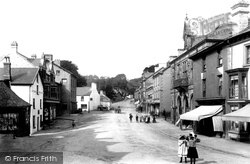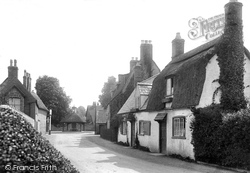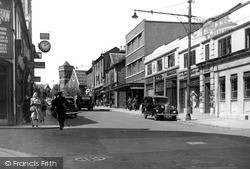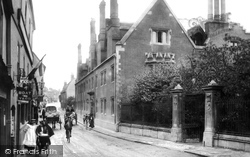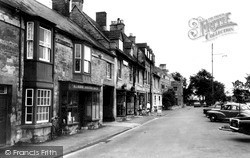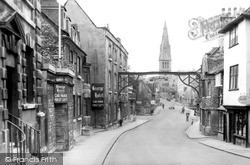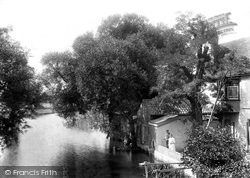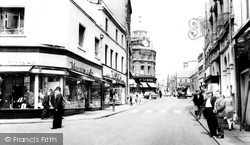Places
26 places found.
Those places high-lighted have photos. All locations may have maps, books and memories.
- Town End, Derbyshire
- Town End, Buckinghamshire
- Town's End, Somerset
- Towns End, Dorset
- Town End, Merseyside
- Town End, Cambridgeshire
- Town's End, Buckinghamshire
- West End Town, Northumberland
- Bolton Town End, Lancashire
- Kearby Town End, Yorkshire
- Town End, Cumbria (near Grange-Over-Sands)
- Town End, Cumbria (near Bowness-On-Windermere)
- Town End, Yorkshire (near Huddersfield)
- Town End, Yorkshire (near Wilberfoss)
- Town End, Cumbria (near Appleby-in-Westmorland)
- Town's End, Dorset (near Melbury Osmond)
- Town's End, Dorset (near Swanage)
- Town End, Cumbria (near Ambleside)
- Town End, Cumbria (near Lakeside)
- Town End, Cumbria (near Kirkby Lonsdale)
- Town End, Cumbria (near Ambleside)
- Town's End, Dorset (near Bere Regis)
- West-end Town, South Glamorgan
- Townend, Derbyshire
- Townend, Strathclyde (near Dumbarton)
- Townend, Staffordshire (near Stone)
Photos
26 photos found. Showing results 3,761 to 26.
Maps
195 maps found.
Books
160 books found. Showing results 4,513 to 4,536.
Memories
3,719 memories found. Showing results 1,881 to 1,890.
Millfielders
I remember falling off a bike on Millfield Crescent when I was about 7 or 8 and I had a really bad knee injury, there was no going to hospitals in those days though, it was Kit Bateman, a first aider at the pit, who mended me and ...Read more
A memory of Newburn in 1960 by
Me Da And Ma
Me Da and Ma. This is about 1949. Me Da came from Clara Vale and grew up there in 1 West View (which was a small two bedroom stone cottage) with Granda and his six brothers, Billy, Bobby, Joe, twins Jim and John and Eddy who was the ...Read more
A memory of Newburn in 1949 by
What Went On
This is from about the 1950s. Along Grange Road was a huge piggery and it was owned by the Liddle family, by, did it pong. Further along you came to the railway crossing with the sign STOP, LOOK, LISTEN in red, this was where the ...Read more
A memory of Newburn in 1952 by
My Best Memories
I was born in Frome and I left when i was 11 years old,I moved with my dad to Bristol. But I have to be honest, since I have left Frome about ten years ago I miss my life I had there. Even though I have been living in Bristol for ...Read more
A memory of Frome in 1992 by
Evacuation
I was evacuated to The Old Hall, Netherseal with my sister June. We were taken to the Village Hall to be 'picked' by a family and were lucky enough to be taken in by the Manners at The Old Hall. Since then I have been back and ...Read more
A memory of Netherseal in 1940 by
Schooldays
Considering I spent 5 years as a day boy at Peter Symonds' my memories are scant to say the least, probably the most significant was the Annual Founders Day service at the Cathedral, the covered passage from the High Street past the ...Read more
A memory of Winchester in 1949 by
1946 To 1952 On London Road
I lived on London Road near Lloyd Road from about 1946 to 1948 and then on Hemingford Road until 1952. Walked along London Road to Ridge Road School (Mrs. Clarke was my favorite teacher) and went to the Granada on ...Read more
A memory of North Cheam by
A Fondly Remembered Childhood
I was born in 1942 and and spent my childhood in Walthamstow, which up to the time I left in 1967 was predominantly a white working class area in north-east London; I went to Chapel End Infants and Junior Schools ...Read more
A memory of Walthamstow by
War Time
I have many memories of the wartime years spent in Corsham. My father was in the Ordnance Corps and served under Colonel Cripps at the Central Ammunition Depot. Up to about 1943 we were billeted at a farm but after that with a Mrs Harvey ...Read more
A memory of Corsham in 1940 by
To School From Manor Road
Each day my journey either was via the cinder track (there was the old reservoir running alongside and the iron railway bridge stood in those days, the railway was still operating I think or in the stages of being ...Read more
A memory of Woodford Halse in 1966 by
Captions
5,111 captions found. Showing results 4,513 to 4,536.
On the lane south from the crossroads the last two houses on the left are timber-framed, the White Cottage on the left with original framing in the side elevation and fake to the front.
Another view along the Welland towards Town Bridge, over which the old Great North Road crossed into Lincolnshire.
Since the by-pass opened, the town has less traffic and the High Street has been paved with herring-bone paviours.
This captures a time when everyone shopped on his or her local high street, and out-of-town shopping was unheard of.
Yet upriver, above London Bridge, were the more modest colliers, whose simple barges, loaded by man-power, carried consignments on to Thameside towns, for shipment to the Midlands and the north through
Demand for steam coal caused collieries to be developed, and over a million tons of coal were mined annually.
The need for a new Catholic church in the town became particularly pressing when nearby RAF Lyneham was unable to provide a full- time chaplain to the station, and they helped fund its completion
This thatched cottage with its little garden stood in Pondhu Road, in the valley bottom to the south west of the town centre.
The open aspect of the street pictured here and familiar to us today originates from the demolition of older buildings in 1862 to allow road widening.
We are looking out over Grange to Morecambe Bay from Charney Well Road, which rises steeply above the town. Now, houses occupy the slope in front of the camera.
This shows the heart of the Victorian holiday town, with the required esplanade and gardens for strolling.
The William Brown Library, with its fine portico of six Corinthian columns, was built in 1860 to house the natural history collection of the 13th Earl of Derby; this had been bequeathed to the town in
The hall, parts of which date from 1550, has been re-built and added to over the years.
At this time these shops would close at noon on Saturday, and Sunday opening was unheard of.
At the Dissolution, the nave was demolished and the western arch of the tower was filled in. The people of the town bought the remains of the original building, and it then became the parish church.
This town, known to its inhabitants as 'Mach', is situated at the far north-west corner of Powys, so distant that it is also in the Snowdonia National Park and just ten miles from the sea.
The name Houghton, always pronounced `Hoe`ton`, has its origins in Saxon times, although there is evidence that there was a settlement here before the Roman period.
Certainly there would have been confusion between the original title and the burgeoning Dunstable Road just visible in the photograph beyond Christ Church at the top of the hill.
Magdalene College was founded by Henry VI as lodgings for student Benedictine monks, and was sited far enough from the town centre to avoid its inmates falling prey to its temptations.
There is a pleasing lack of uniformity about the facades and rooflines of the buildings in the High Street, some of which are small cottages, and others grand town houses.
In the era of the stage coach, the George Hotel was classed as the best hotel on the Great North Road, and it is still one of the best in the area.
Magdalene College was founded by Henry VI as lodgings for student Benedictine monks, and was sited far enough from the town centre to avoid its inmates falling prey to its temptations.
Well before the Roman conquest, it had defended the north and east flanks of the capital of Cymbeline's kingdom, while the west flank was protected by a series of dykes and ramparts, some of which
By 1860 it was the principal town of Wales, and the iron-making capital of the world. The vehicle on the right-hand side is a dark blue Merthyr Tydfil Corporation ambulance.
Places (26)
Photos (26)
Memories (3719)
Books (160)
Maps (195)

